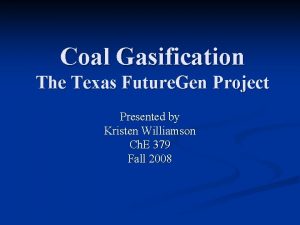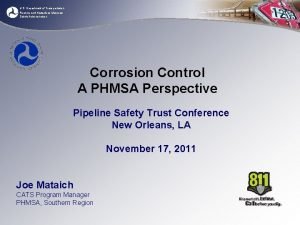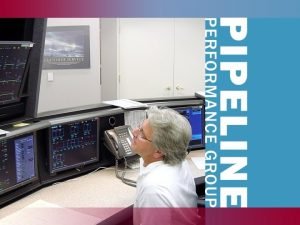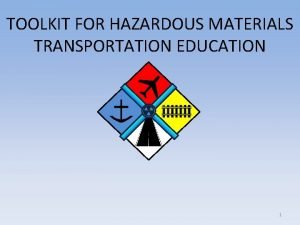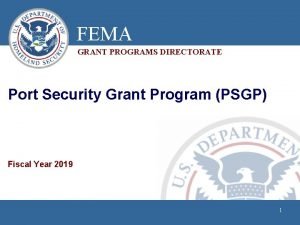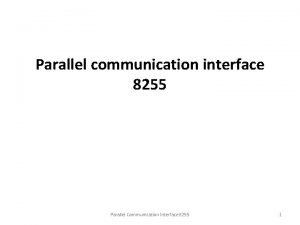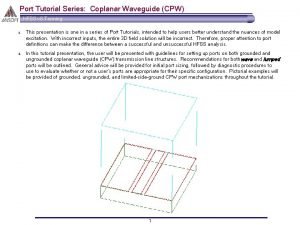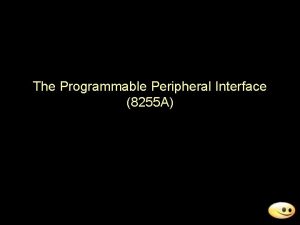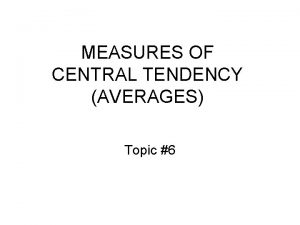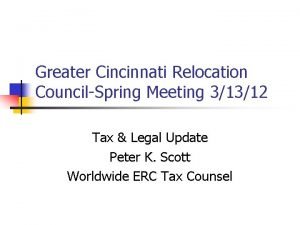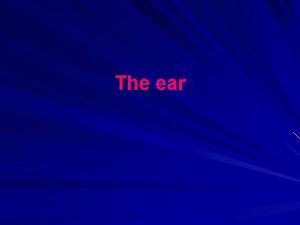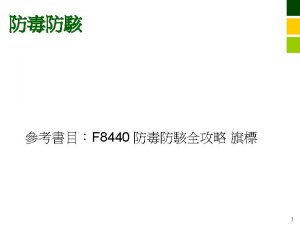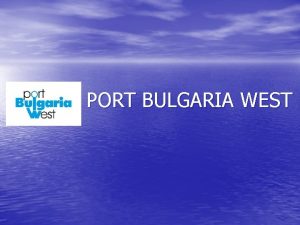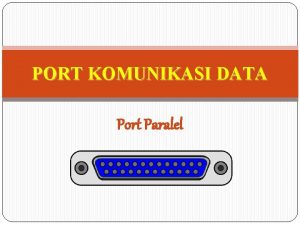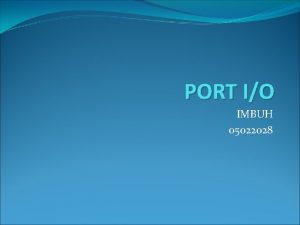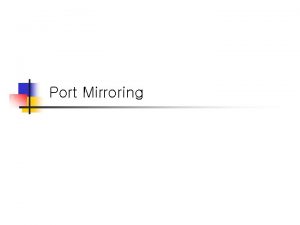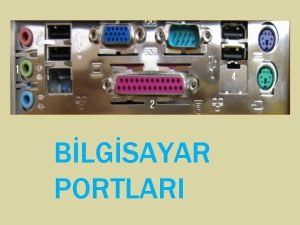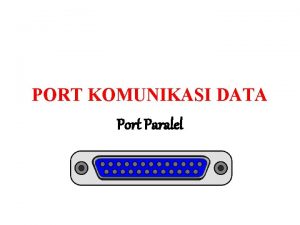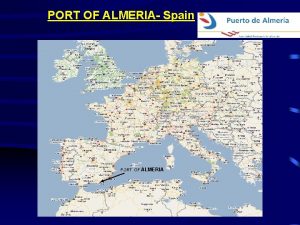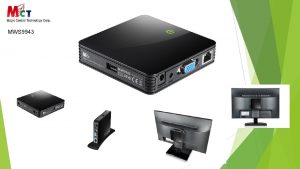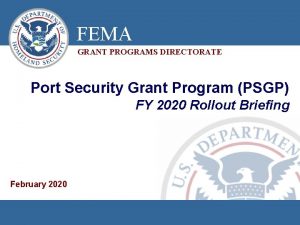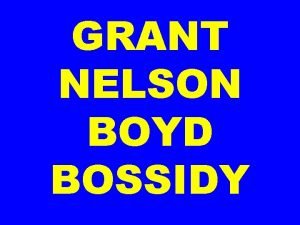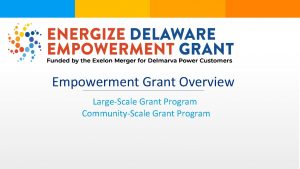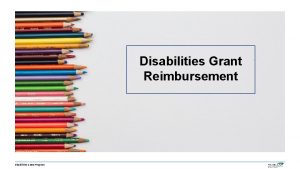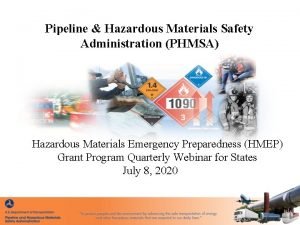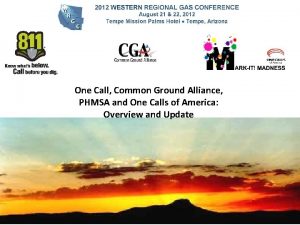Greater Lafourche Port Commission PHMSA Grant Impact on




























- Slides: 28

Greater Lafourche Port Commission PHMSA Grant Impact on Pipeline Safety In the Maritime Environment

Coastal and Marine Third Party Damage Incident DATA The data below was compiled from PHMSA, Minerals Management Service, United States Coast Guard and the National Transportation Safety Board. Description Pipeline Strikes 2 Reported Impact (1987 -2015) 137 Fatalities 25 Injuries 17 Property Damage and Lost Product $120, 500, 000 Product Released to the Environment 100, 000 bbls

Subsea Pipeline Incidents • Each day approximately 400 large supply vessels operate in the Port Fourchon waterways and 1. 15 million barrels of crude oil are transported via pipelines through the port. • In 2009 in Bayou Lafourche, a 16” Natural Gas Pipeline was struck. 3

Vessel Damage to a 16” Natural Gas Pipeline • Vessel crew safety • Pipeline products released into the marine environment Spills in Coastal/ Marine Environments can average over $10, 000 a bbl. in clean up costs. 4

Louisiana Law States ANY Movement or removal of earth either on land or submerged must have a One Call Notification. Recommendation: Any force contacting the water bottom creating 150 lbs. of force or more, should require a one call notification. 5

Port Fourchon Addressing the Issue Port Fourchon recognized a gap in pipeline safety measures in the maritime environment and pursued the right partners to address the issue: • Federal Funding – PHMSA Grant • Non-profit industry group – CAMO • Industry stakeholders – pipeline & vessel operators • Technology Leaders – Oceaneering Port. Vision Services 6

Coastal and Marine Operators (CAMO) Pipeline Safety Industry Initiative CAMO was formed in 2009 with over 20 pipeline companies http: //www. camogroup. org/ • Purpose - To explore and address challenges with pipelines operated in the marine environment: improving public safety, enhancing awareness, and reducing spills and damage to coastal and marine infrastructure • Action - Design and support proven solutions that will enhance the protection of oil and gas pipeline infrastructure through industry, government, and agency collaboration, while demonstrating continuous improvement. 7

Coastal and Marine Operators Members 8

PHMSA Grant: Automatic Identification System (AIS) Safety Message Transmission

Pipeline AIS Broadcast Project AIS Notification System for pipelines in the Port Fourchon Region • Each vessel passing through the two pipeline corridors below, will be monitored to alert if their activities threaten the submerged pipelines Location of pipeline monitoring/alerting zones: - Bayou La. Fourche North, Southeast of Halvoline Canal - Centered on the point Lat. 29. 157558 Long. -90. 230906 (Pipeline Corridor 2 Bayou La. Fourche North) - Bayou La. Fourche South, vicinity of SW corner of Port Fourchon - Centered on the point Lat. 29. 11072, Long. -90. 208890 (Pipeline Corridor 1 South. West Channel) • Vessels will receive an AIS safety message: “PIPELINE BELOW”, if stopped inside one of one the above two monitored zones. The message automatically will be generated and broadcast specifically addressed to their vessel alerting them. • Pipeline Operators will also receive an alert with position and identity of vessels inside the charted pipeline corridors Goals: Improve safety of mariners, protect environment, keep waterways open and traffic moving 10

What is…. Automatic Identification System (AIS) • Collision avoidance between vessels • Signal transmitted via VHF with range of 20 to 40 miles • Title 33, Code of Federal Regulations 164. 01 Applicability & § 164. 46 - vessels of 65 feet or more in length, other than passenger and fishing vessels, Towing vessels of 26 feet or more in length and more than 600 horsepower, Passenger vessels, of 150 gross tonnage or more, more than 150 passengers-for-hire, Tankers, regardless of tonnage 11

AIS Data is Captured & Processed • Global network of AIS receivers to captured signals • Geo-fencing to log and alert as vessels –arrive –depart –pass points of interest. • Historical AIS data captured for playback and analytical reporting up to twice a minute - 15 billion records dating back 5+ years - 50 million new location reports every day 12

Communication Pipeline To gro und sta tion To s pace Computing infrastructure for data processing and data warehousing ls Trave Vessels transmit AIS signal 20 to Data developed into application for web presentation User Port. Vision account es 50 mil Network of AIS Receivers Charts and aerial views of ports, waterways, and critical infrastructure 13

AIS Data Utilization • Automated documentation of factual vessel position data • Optimize terminal and waterway utilization • Traffic pattern studies • Competitive analysis of fleets, terminals, assets • Enforcement of Federal, State, Local, and company stated policies • Emergency response: Situational reporting, logistical coordination, safety of responders 14

Pipeline Corridor - NOAA Chart 15

Monitoring Two Pipeline Corridors - 1 16

Monitoring Two Pipeline Corridors - 2 17

AIS Safety Message-Wheelhouse Alert 18

AIS Safety Message-Wheelhouse Alert 19

Rose Point Chart Message Display 20

Nobeltech Chart Message Display 21

Port. Vision® – Protecting Subsea Assets Leveraging Automatic Identification (AIS) transmissions from vessels we are able to: • Real-time visibility of vessel traffic over or near your pipeline corridor. • Alert on vessel threats, via e-mail and/or text, of vessels operating over submerged cables in a threatening manner. • Historical playback of vessel traffic for post incident investigations to determine cause factors and identify responsible parties that may have been previously unidentifiable. • Analytical tools to target funding towards infrastructure protection and remediation efforts based on documented vessel activities. 22

Pipeline Monitoring Zones 23

Pipeline Near-Miss Case Study • Pipeline operator received an alert regarding a vessel over a pipeline segment that looked suspicious. • Field inspector sent to investigate and confirmed vessel was stopped in pipeline corridor. • Inspector notified Field Supervisor and Control Center. • Field inspector contacted vessel owner, provided vessel captains phone number. • Captain was asked for an ALL STOP until further notice to do his proximity to pipeline. • Confirmed vessel was grounded, notifications were made to all pipeline stakeholders. • Vessel held fast to high tide, so not to be a threat to the pipeline. 24

Vessel Track Over Pipeline 25

Case Study: MIDNIGHT STAR Vessel Track Over Pipeline 26

The Future of Marine Pipeline Safety • • Leverage new PHMSA Grant funding. Continued focus on better use of technology. Targeted outreach to the right groups. Improve laws regulating the federal and nearshore waters to address the specific issues in the marine environment. • Gain more support and connect with other organizations or individuals looking to improve safety and awareness in the maritime environment. 27

Contact Information Jason Tieman Director Maritime Operations Oceaneering Port. Vision Services www. portvision. com 28 1. 409. 256. 5560 jtieman@oceaneering. com
 Phmsa
Phmsa Department of transportation
Department of transportation Phmsa crm faq
Phmsa crm faq Phmsa
Phmsa Port security grant program
Port security grant program 8255 parallel communication interface
8255 parallel communication interface Lump port wave port
Lump port wave port Read and write signals in 8255 are tri state
Read and write signals in 8255 are tri state Jcaho standards
Jcaho standards Impact of national knowledge commission
Impact of national knowledge commission Secondary education commission 1952-53 in hindi
Secondary education commission 1952-53 in hindi Graduated commission in a sentence
Graduated commission in a sentence A cell is a living unit greater than the sum of its parts
A cell is a living unit greater than the sum of its parts Compound inequality examples
Compound inequality examples Mean higher than median
Mean higher than median Cincinnati
Cincinnati James the greater facts
James the greater facts Greater sac lesser sac
Greater sac lesser sac Greater bay area opportunities and challenges
Greater bay area opportunities and challenges 3/4 vs 5/8
3/4 vs 5/8 The cell is a living unit greater than the sum of its parts
The cell is a living unit greater than the sum of its parts Chorda tympani
Chorda tympani Gbmc infoweb
Gbmc infoweb Grace greater than our sin history
Grace greater than our sin history Greater new life church
Greater new life church Japanese ageing population
Japanese ageing population Greater atlanta christian school scandal
Greater atlanta christian school scandal Greensboro realtors association
Greensboro realtors association
